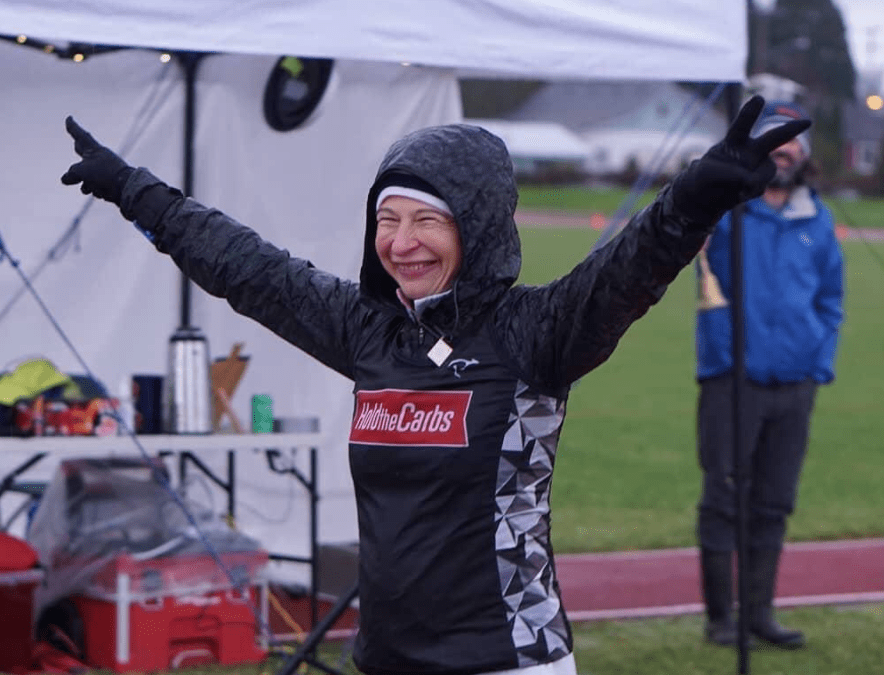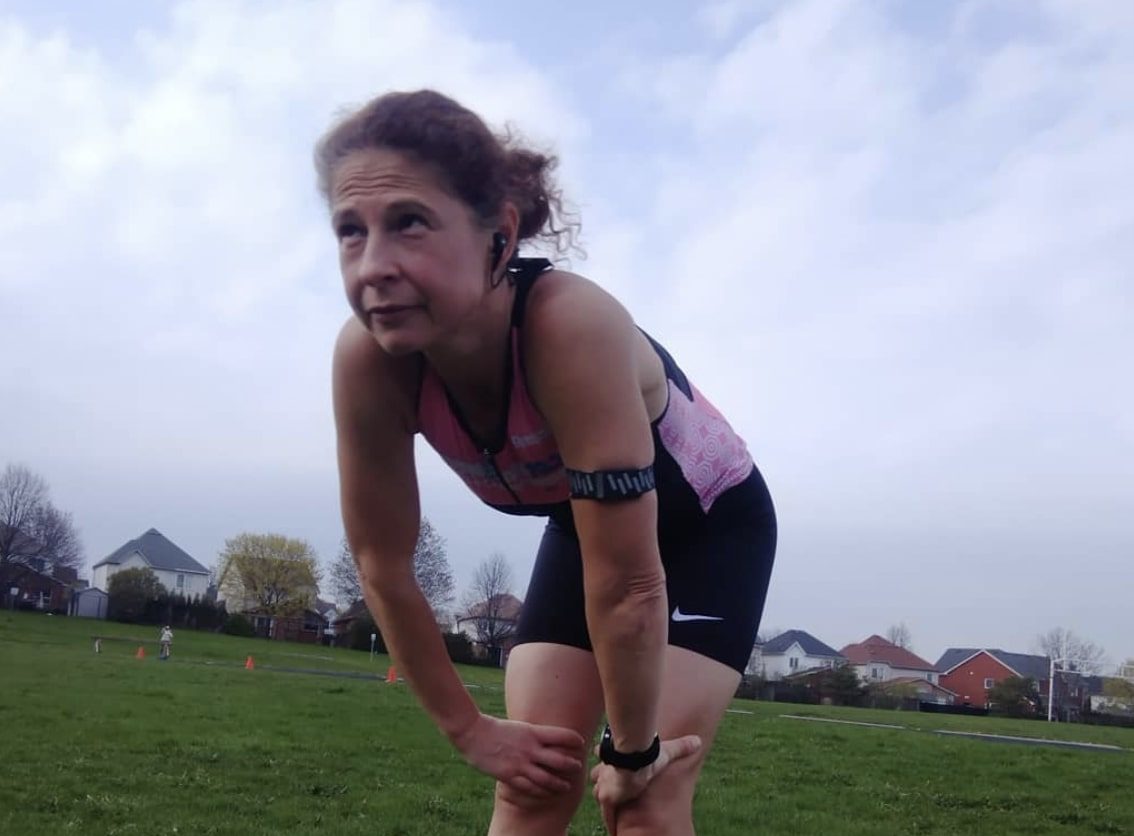Carbohydrate cycling with Viktoria Brown
The three-time ultramarathon record-holder on nutrition and training

Viktoria Brown hasn’t been in the ultrarunning scene for long, but the 46-year-old from Whitby, Ont. has already broken three ultrarunning records since she started doing ultras in Sept. 2020. Most recently, she set the Canadian W45 100-mile record, posting a time of 15:24:23 at a 24-hour race in North Carolina. She is also the founder and CEO of Hold the Carbs, a line of low-carbohydrate, keto food products. We caught up with Brown to talk about nutrition, how she fuels her training, and where carbohydrates do (and don’t) fit into her diet.

RELATED: Viktoria Brown wins That Dam Hill outright, sets course and Canadian soil 24-hour record
It may seem counterintuitive that an ultrarunner owns a low-carb food company, but Brown is quick to clarify that she does, in fact, eat carbohydrates. When asked how she fuels for her training and for these long races, she explains that the way she eats during training is different from how she eats for races.
“For training, I absolutely do love to use the Hold The Carbs products,” she explains. “The reasoning behind it is that for these extremely long events, you are going to need your fat stores, so going low-carb in training teaches my body to tap into those fat stores much more efficiently.”
Brown explains that she periodizes her nutrition to coincide with the periodization of her training. During certain training phases, she follows a low-carb diet, but for certain workouts or during other phases she eats a high-carb diet. Doing so, she says, teaches her body how to use both fat and carbohydrates efficiently to fuel her activity, and she adds that there is research to support both nutrition strategies.
https://www.instagram.com/p/COxXAG8Hvik/?utm_source=ig_web_copy_link
“I like to take advantage of both those systems (fat and carbohydrate metabolism),” she explains, “because I think that gives the best result in a race situation.”
On race day, however, carbs are definitely on the menu. Brown says this is because she doesn’t need to top-up her fat stores during a race, since she already has a plentiful supply, but her body will run through her carbohydrate stores much more quickly. Since she has trained her body to use both efficiently, she feels she is able to get the most out of both systems.
Brown does not sugar-coat the effect a low-carb diet has on her performance, however. She readily admits that when she’s eating little to no carbohydrates, she is much slower than she normally would be. For this reason, she only follows a low-carb diet when it makes sense with her training, such as during the base phase, when she isn’t doing any hard workouts, or during her taper, when she’s cutting back significantly on mileage. She adds that going low-carb during the taper reminds her body how to use fat efficiently right before the race.
“I find that it’s very important before a race during the taper period that I do the high-fat, low-carb diet,” says Brown. “And yes, the paces are going to drop, but that’s fine.”
To do this, Brown starts eating low-carb about two weeks before her race. Three days before race day, she switches to a high-carb diet to load up for the race. She emphasizes that she’s not increasing or decreasing her overall calorie or food intake, only changing the macronutrient (carbohydrate, fat and protein) ratios. During a race, Brown says she relies predominantly on liquid nutrition, because, for the most part, that’s all her body is able to handle. During any race over 30 hours, however, she will begin to supplement with solid food.
Brown’s advice to runners
For any runner who is thinking about using carb cycling in their training, Brown’s biggest piece of advice is to think it through carefully. The type of fuelling you choose, she explains, will change the result of your workouts, so you need to match your fuelling strategy with your training. Additionally, she admits that following this type of nutrition protocol is not easy, so she only follows it when she’s preparing for important races.
“Know what you’re doing, look up the science behind it, and make sure you’re doing what is supported by science and not just what you think is right,” says Brown, “not just asking around, but actually looking at the research.”
Finally, she says that if you have a coach, make sure they know what you’re doing so they can adjust your training accordingly. That way, they won’t give you speedwork when you’re in a low-carb nutrition phase, which would be a waste of your time.
RELATED: Women and endurance running part two: nutrition for female athletes

